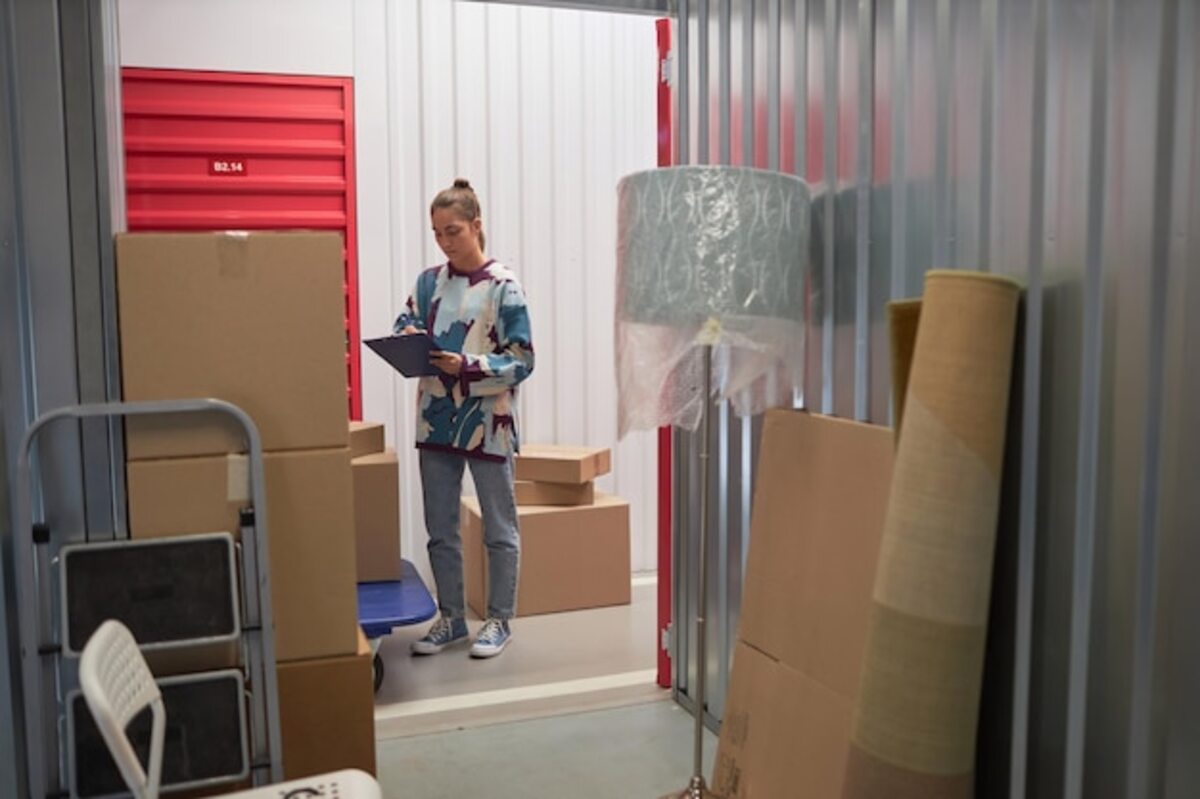Redefining your space: keys to organizing every corner during the move

Redefining your space during a move can be the key to starting this new chapter on the right foot. Organizing every corner of your new home not only saves time and effort but also transforms chaos into order and tranquility. In this article, we will provide you with a practical checklist that will allow you to optimize every area of your house, ensuring that each item has its place. Get ready to discover how to make your move a more enjoyable and efficient experience.
1. Initial planning: define your objectives and priorities.
Initial planning is a fundamental step for carrying out a successful move. Before you start packing boxes and loading furniture, it is crucial to take some time to define your goals and priorities. Ask yourself what you want to achieve in your new home: do you want to maximize space? Create specific areas for work, rest, or leisure? Having clarity about your goals will allow you to make more informed decisions while organizing every corner, thus avoiding the frustration that can arise from not having a clear plan.
Additionally, setting priorities will help you focus on what really matters. Not all items and areas of your new house hold the same importance; therefore, categorize your belongings into essentials, decorative, and dispensable. This will not only make the packing process easier but also allow you to get rid of things you no longer need or that simply take up valuable space. By focusing on the essentials first, you can create a welcoming and functional environment from day one in your new home, making this move a positive and enriching experience.
2. The importance of sorting: what to keep, donate, or sell.
Sorting your belongings is a crucial step in the moving process that not only facilitates organization but also promotes a more mindful attitude about what you truly need. By deciding what to keep, what to donate, and what to sell, you confront each item and assess its value in your current life. This exercise not only helps you reduce clutter but can also open your eyes to the items you have accumulated without a clear purpose. It is an opportunity to free yourself from the unnecessary and make space for what truly matters in your new home.
Donating or selling items in good condition is not only beneficial for you but also for others. Donation allows those useful items to find a new life with people who truly need them, while selling can generate extra income that you could use to cover moving expenses or decor for your new space. Additionally, this sorting process promotes a sustainable practice by reducing waste and contributing to the well-being of the community. Thus, each decision becomes a step towards a more organized and meaningful home, where every corner reflects your choices and personal values.
3. Essential tools for a successful move.
To carry out a successful move, having the right tools is essential. From sturdy boxes to quality adhesive tape, each element plays a crucial role in organizing and transporting your belongings. Boxes come in various sizes and types, allowing you to group similar items and protect fragile articles. Don't forget to include permanent markers to label each box; this will greatly facilitate the unpacking process and help you quickly locate what you need in your new home.
In addition to boxes and markers, there are other essential tools that can make a difference during the move. A good set of screwdrivers and a wrench are essential for disassembling large furniture or any item that requires assembly before transport. Also, consider investing in moving blankets, which protect your furniture from scratches and dents during transportation. Finally, do not underestimate the importance of having resealable plastic bags on hand: they are perfect for storing small items like screws or accessories that could easily get lost in the process. With these tools at your disposal, you will be better prepared to face each stage of your move with confidence and efficiency.
4. How to measure the spaces in your new home before packing.
Measuring the spaces in your new home before packing is one of the keys to ensuring that every piece of furniture and object fits perfectly in its place. Before starting the moving process, take a layout of each room and use a tape measure to get the exact dimensions. Note the measurements of doors and windows, as well as the location of outlets and radiators, as this will allow you to visualize how to best arrange the furniture in each area. Don't forget to also consider the height of the space, especially if you plan to include shelves or tall furniture.
Once you have all the measurements, compare these dimensions with your current furniture. This will help you decide which pieces to take with you and which could be sold or donated. By making a clear list of which furniture fits in each room, you can optimize the loading and unloading process during the move. Additionally, knowing exactly what space you have available will allow you to think of more effective decorating options and even consider purchasing new items that complement your style without overcrowding your spaces. Pre-planning will enable you to enjoy your new home more fully from day one.
5. Strategies for packing efficiently by rooms.
Packing efficiently by room is a key strategy to ensure that your move is as stress-free as possible. Start by designating a specific space in the loading area where you can keep boxes and items from each room together. Labeling each box with the name of the corresponding room will make both loading and unloading at your new home easier. Consider using color codes to quickly identify which box belongs to which area; for example, use blue labels for the kitchen, red for the living room, and green for the bedrooms. This not only streamlines the process but also allows you to better visualize how things will look in their new place.
Another important aspect of packing is prioritizing items based on their use and necessity. Start by packing those things you use less frequently, such as decorations or out-of-season clothes, leaving the essential items you will need just before or during the move for last. Additionally, make sure to group similar items within each box; for example, place books together and kitchen utensils in a different box. By organizing your belongings this way, you not only optimize space within the boxes but also make unpacking easier when you arrive at your new home. With these strategies well implemented, you'll be one step closer to a successful and organized move.
6. Smart labeling: simplifies the unpacking process.
Smart labeling is an essential strategy that can greatly simplify the unpacking process. By labeling each box with its contents and the room it belongs to, you not only avoid confusion when you arrive at your new home, but you also facilitate organization from the very beginning. Use colored labels or visual codes to quickly distinguish which items are a priority and which can wait a little longer before being unpacked. This simple yet effective method will help you stay calm amid the chaos and allow you to enjoy the process of settling into your new space more.
Additionally, using a numbering system along with labels can take your organization a step further. By assigning a unique number to each box and keeping a record on a sheet or app where you note its contents, you will be able to quickly locate what you need without having to open multiple boxes. This is particularly useful for essential items like kitchen utensils or cleaning products, which you will want to have on hand during the first days in your new home. With this methodical approach, unpacking becomes a much more manageable and less overwhelming task, allowing you to focus on making your new house a true home from the very first moment.
7. Tips for organizing the kitchen: maximize functionality and space.
To maximize the functionality and space in your kitchen, it is essential to start by sorting all utensils and food. Separate what you use frequently from what you only need occasionally. This exercise will not only allow you to get rid of unnecessary items, but it will also make access to what you actually use in your daily life easier. Consider using organizers for drawers and shelves; these can help you keep everything in its place and prevent it from becoming chaotic when cooking. Remember that an organized kitchen is not only more efficient, but also more visually appealing.
Another effective strategy is to take advantage of the vertical space in your kitchen. Install additional shelves or hooks where you can hang utensils, pots, or even spices. This not only frees up space on the surfaces but also adds a decorative touch to your kitchen. Additionally, consider using transparent containers to store dry foods; this will help you quickly identify what you have and avoid unnecessary purchases. With these simple adjustments, you can transform your kitchen into a functional and welcoming space that makes every meal more enjoyable.
8. Common areas: creating harmony in the living and dining room.
Upon arriving at a new home, the living room and dining room are key spaces that should reflect harmony and functionality. Creating a cozy atmosphere involves carefully choosing the arrangement of furniture, colors, and decorative elements. Start by defining zones in these spaces; for example, place the sofa in a position that encourages conversation and allows for smooth circulation. A good tip is to opt for side tables or benches that complement the aesthetics without overwhelming the space. By integrating different textures and materials, you can add warmth and personality, turning these areas into the heart of the home.
In addition to the physical arrangement, it is essential to consider lighting as a key element to foster harmony in your living and dining areas. Make the most of natural light during the day by opening curtains or blinds; for nighttime, incorporate lamps with dimmers that allow you to create different atmospheres according to the occasion. Don't forget to add personal touches through artwork or family photographs that tell your story and connect those who inhabit the space. This way, each corner will not only be aesthetically pleasing but also a reflection of your experiences, making your new home truly special.
9. Organization of the bedroom: creating a personal sanctuary.
The organization of the bedroom is essential to create a personal refuge where you can relax and recharge. This space, which should be a sanctuary of peace and comfort, can be transformed through careful planning. Start by getting rid of what you no longer need; this not only frees up space but also allows you to evaluate which items are truly meaningful to you. Once you have selected your belongings, consider how you want your bedroom to feel: use soft colors in the decor and choose functional furniture that adds style without sacrificing comfort.
The arrangement of furniture plays a key role in the flow of the space. Place the bed as the main focal point of the room and organize it with cozy bedding and comfortable pillows to invite rest. Make sure to leave enough space around to facilitate movement; this will contribute to a more open and less cluttered atmosphere. Use shelves or decorative boxes to store personal items, keeping only what you truly want to display in view. This way, every corner of your bedroom will not only be organized, but will also reflect your personality and lifestyle, making it that much-desired personal retreat.
10. Post-move maintenance: tips for maintaining order in the long term.
Post-move maintenance is essential to ensure that order and organization are maintained in the long term. Once you have established a space that works for you, the real challenge begins: maintaining that order. To achieve this, it is crucial to develop daily habits that help you preserve the harmony in your new home. Consider implementing a simple organization system, such as assigning a specific place for each object and conducting regular reviews of your belongings. Spend a few minutes each day reorganizing what has become disordered; this will not only be easier than waiting for chaos to grow, but it will also provide you with a continuous sense of control over your environment.
Additionally, planning is key for long-term maintenance. Establish weekly or monthly routines where you evaluate specific areas of your home. Ask yourself if you really need everything you have and if each item still serves a purpose in your daily life. Don't hesitate to donate or recycle what you no longer need; this process will not only free up space but also contribute to a more minimalist and mindful lifestyle. Remember that redefining your space is not just a one-time action during the move, but an ongoing commitment to order and serenity in your home.



